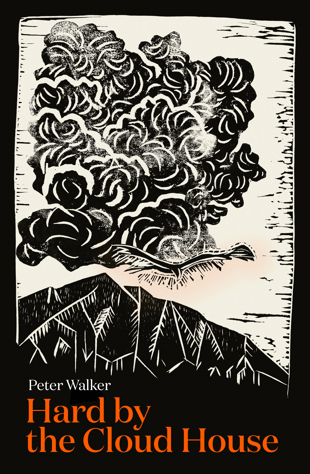Sally Blundell reviews Hard by the Cloud House by Peter Walker for Aotearoa New Zealand Review of Books:
‘Islington, London. On a bright autumn day in 2009, New Zealand-born journalist and author Peter Walker reads the headline in the newspaper: ‘Maori legend of man-eating bird is true’. His first thought: ‘I should have written this story’.
Walker had heard stories of Pouākai, the great raptor commonly known as Haast’s eagle that could fell a moa in one strike and carry off small humans. He knew the jagged skyline of Canterbury’s Torlesse Range from which the eagle might have soared with its ‘cool, property-owning eye’. His second thought: ‘There should be more.’
A few years later he finds more. An essay by University of London professor of Iranian studies David Bivar lists the great winged raptors of ancient, classical and Islamic myth – the Griffin, Anqa, Rukh (or Rukhkh or Roc) and Persian Simurgh. By the Middle Ages, these giant birds were all located somewhere in the ‘Great Encircling Ocean’ in or beyond the China Seas – ‘in other words,’ writes Walker, ‘the Pacific’. Since there were no other huge eagles in the region, argued Bivar, it stands to reason the Rukh must have been Harpagornis moorei, or the Pouākai or Hōkioi of early Māori. It is a long shot – a beautifully written and utterly engaging long shot – but for many years even the story of the feared Pouākai itself, swooping across early Māori tales and rock drawings in the South Island’s limestone shelters, was considered a long shot.
Walker begins his book in March 1860, when swagman Henry Davis, with a wide-awake hat and a gun in his pocket, seeks work or at least shelter at a Canterbury sheep station. Runholder George Moore shuns rural conventions of hospitality and sends him away. Two days later, Davis’ body is found. Moore is publicly reviled for his cold-heartedness, yet it is his name that is immortalised in that of the giant eagle, Harpagornis moorei. A decade later, at Moore’s invitation, Canterbury Museum director Julius Haast organises an excavation of moa bones on Moore’s Glenmark estate.
During the dig, taxidermist Frederick Fuller spots a single huge claw lying amongst the moa bones ‘like a dagger at a pyjama party’. The discovery comes to the attention of London palaeontologist Richard Owen. According to Henry Yule’s 1874 translation of Marco Polo’s Travels: ‘The bones of a veritable Ruc from New Zealand lie on the table of Professor Owen’s Cabinet’. It is a circuitous but intriguing introduction to Walker’s account of a giant eagle – our giant eagle – soaring through ancient stories of fabulous creatures and maritime exploration in ‘the great civilisations of Asia and Middle East’.’
Read the rest of the review here.


